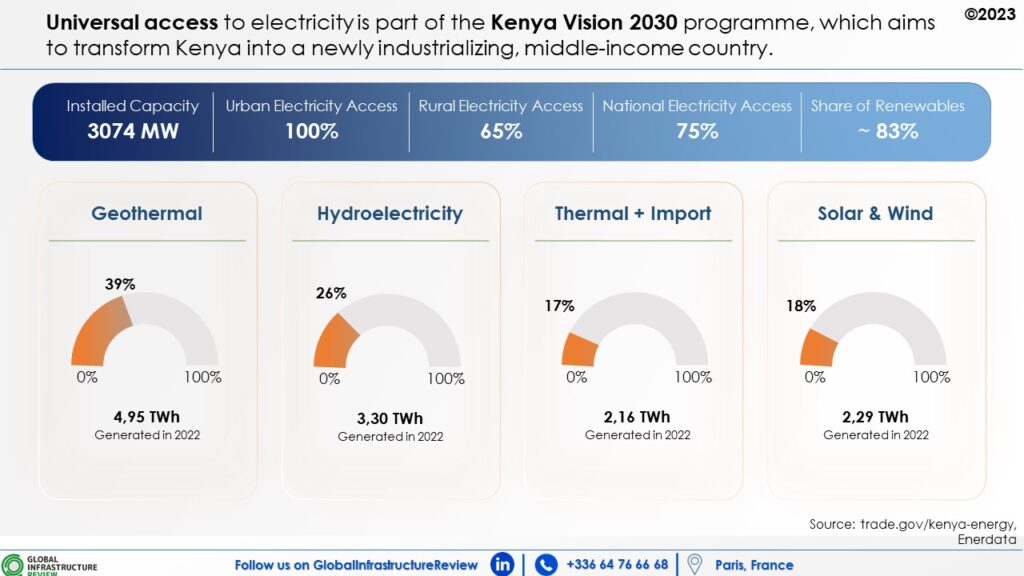Achieving Sustainable Development Goal 7 requires ensuring access to affordable, reliable and modern energy services for all by 2030.
In sub-Saharan Africa, although many people still lack access to reliable electricity, Kenya’s experience is quite interesting for several reasons:
- Kenya has the highest electricity access rate in East Africa and is a leader in clean energy on the continent.
- Total access to electricity is 75%, both on-grid and off-grid solutions, with urban areas being 100% electrified.
- More than 80% of the country’s electricity mix (geothermal, hydro, thermal, solar, wind) comes from clean and renewable energy sources.
- The country is among the top 10 in the world in terms of installed geothermal energy capacity (8th in 2021).
- Kenya is one of the lowest cost developers of geothermal energy in the world.
- Kenya is among the top five African countries with solar and wind power generation as a significant share of electricity generation (3rd in 2020), according to the think tank Ember.
- Kenya’s Olkaria IV 280 MW Geothermal Power Plant, is the largest of its kind, ever, in Africa
There are explanations behind this success in a country where only 28% of the population had access to electricity in 2013

In the last two decades, the Kenyan government has launched a range of policy interventions and initiatives such as the Energy Access Scaling Programme (EASP), the Kenya National Electrification Strategy (KNES) associated with the Kenya Vision 2030 long-term strategy.
Kenya has taken advantage of its natural capacity in the areas of solar, wind and, in particular, geothermal energy, given its favourable position across the highly active Rift Valley;
Kenya has been able to consider different solutions to meet different needs. As a result, the GoK has successfully integrated power generation at every scale, from grid-connected wind and solar farms to rural mini-grids.
The World Bank praised Kenya’s experience as providing valuable lessons for other African countries in terms of government commitment, incentive policies and regulation.